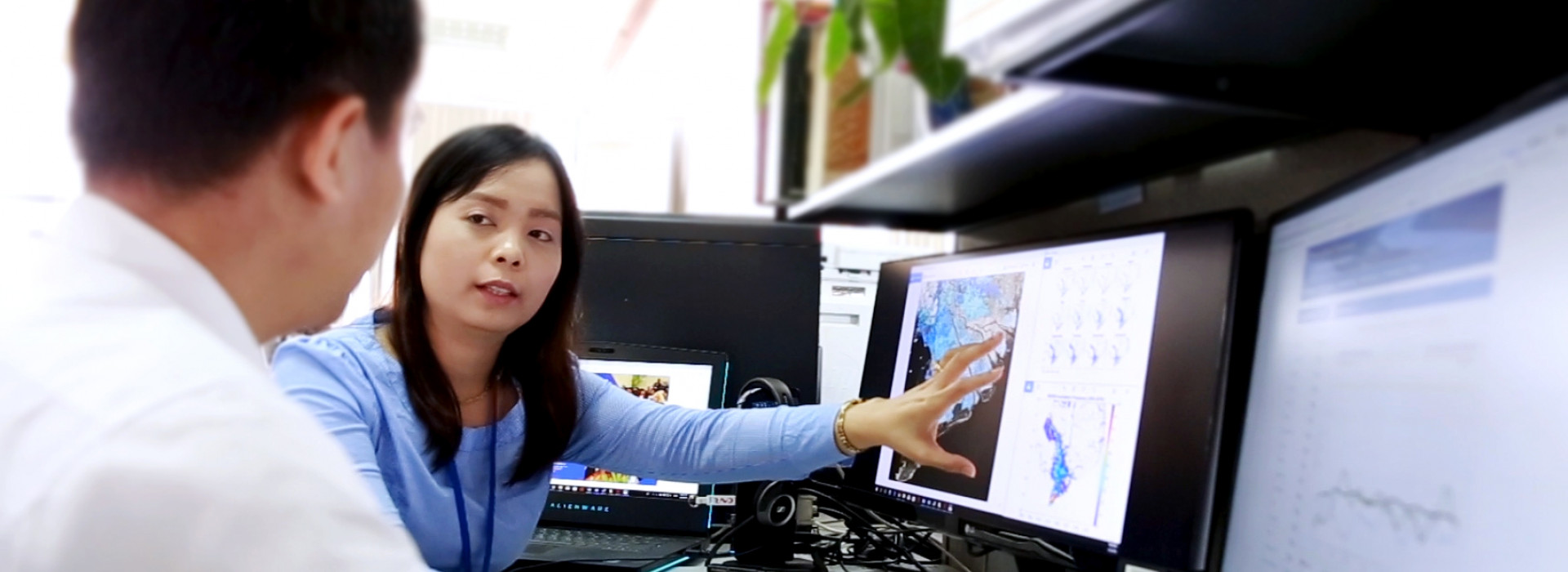
Modelling and Assessments
The Mekong River system is complex with many connected and interacting components. Countries sharing the river have ambitious plans for the development of water resources, including the construction of hydropower plants, expanding irrigation, and domestic and industrial use. Intensive developments can potentially impact the flow of the river, and alter the biology and ecology of the systems that sustain the Mekong’s highly productive fisheries. A changing global climate and the transboundary nature of the river add complexity to the debate around equitable sharing of the river’s resources.
Water resources modelling is playing an increasingly important role in the debate. It can investigate trends and quantify the risk of over-development to help understand the past, current and future state of water resources in the basin.
In the Lower Mekong River Basin (LMB), a large number of hydrological models have been developed to evaluate how the physical character of the Mekong River – the amount of water present in its channels, floodplains, and delta – will change as a result of modifications to flow or development activities.
In the 1960 and early 1970s, models were developed through the Mekong Committee, the predecessor of the MRC, for basin-scale development planning and flood forecasting. These efforts were sidelined by conflict in the region. During the 1980s, as peace was restored, more detailed models for feasibility studies of specific projects or management of particular areas were developed, mainly by international consulting companies.
In 2001, the MRC created a Decision Support Framework (DSF) through which a transparent modelling platform was established and used by all the Member Countries to describe the hydrological and other impacts of water resource development in the LMB. The DSF has assisted national planners to assess both the magnitude of changes brought about through natural and human-made interventions in water resource systems, as well as the impacts that these will have on the natural environment and on people’s livelihoods.
MRC Models
At present, suite of models that perform the water quantity and quality simulations required to support impact assessments are used by the MRC and the Member Countries. The MRC DSF consists of three inter-connected models:
- Soil and Water Assessment Tool (SWAT): This hydrological model simulates the quality and quantity of surface and ground water and predict the environmental impact of land use, land management practices, and climate change.
- Integrated Quantity and Quality Model (IQQM): This water balance model simulates possible future water resource developments and to assess their effects on water availability throughout the basin, river flows, irrigation demand, and hydropower production.
- Integrated Spectrographic Innovative Software (ISIS): This hydrodynamic model is used to simulate the river system downstream of Kratie in complex floodplain areas, including the Tonle Sap and the delta in Viet Nam where season flooding extends beyond the LMB boundary. It generates hourly data for water levels and salinity throughout the main channels and distributaries in the delta.
In certain cases, existing models are capable of undertaking the required analyses, but in other cases, either an existing model requires adaptation, or a new model needs to be developed. For instance, in the Council Study, the eWater source model was used to extend the capability of the water resource model IQQM for sediment and nutrient movements. WUPFIN tools were used to extend the parameters derived from the results of the DSF models and generate input for Biological Resources Assessment (BioRA) model. The BioRA model assesses changes to biological process and impacts of development activities on the aquatic resources in the basin.
Modelling and assessment
A modeling toolbox (MRC DSF / Toolbox) was developed in 2010 from the origin of the DSF in 2001. The Toolbox comprises software and applications enabling comprehensive and rigorous analyses and assessments, including in the areas of hydrology, sediment, ecological health, water quality and fisheries.
Besides supporting the development of modelling tools, the MRC is responsible for conducting modelling, assessments and analyses. Data used to run the models are collected from the MRC’s river basin monitoring network, as well as data from the Member Countries and its upstream Dialogue Partner, China. Around 10,333 datasets are currently accessible through the MRC Data Portal.
In addition to routine modelling, the tools play a critical role in undertaking major studies on the Mekong River Basin, such as the Basin-wide Assessment of Development Scenarios, assessments of impacts of climate change on the Mekong’s flow regime and the MRC Council Study.
In the Council Study, modelling supported other sector assessments such as climate change, land-use change, domestic and industrial uses, irrigation development, hydropower development, navigation, flood protection and flood plain management. The report used a scenario-based approach to consider a range of future conditions: the near future (2020) and a longer-term planning horizon (2040) were compared with an early development condition (2007).
Key results from the model and assessment tools were used as input for national and regional strategic planning and policy, including the Basin Development Strategy (BDS) 2021-2030 and MRC Strategic Plan (SP) 2021-2025.